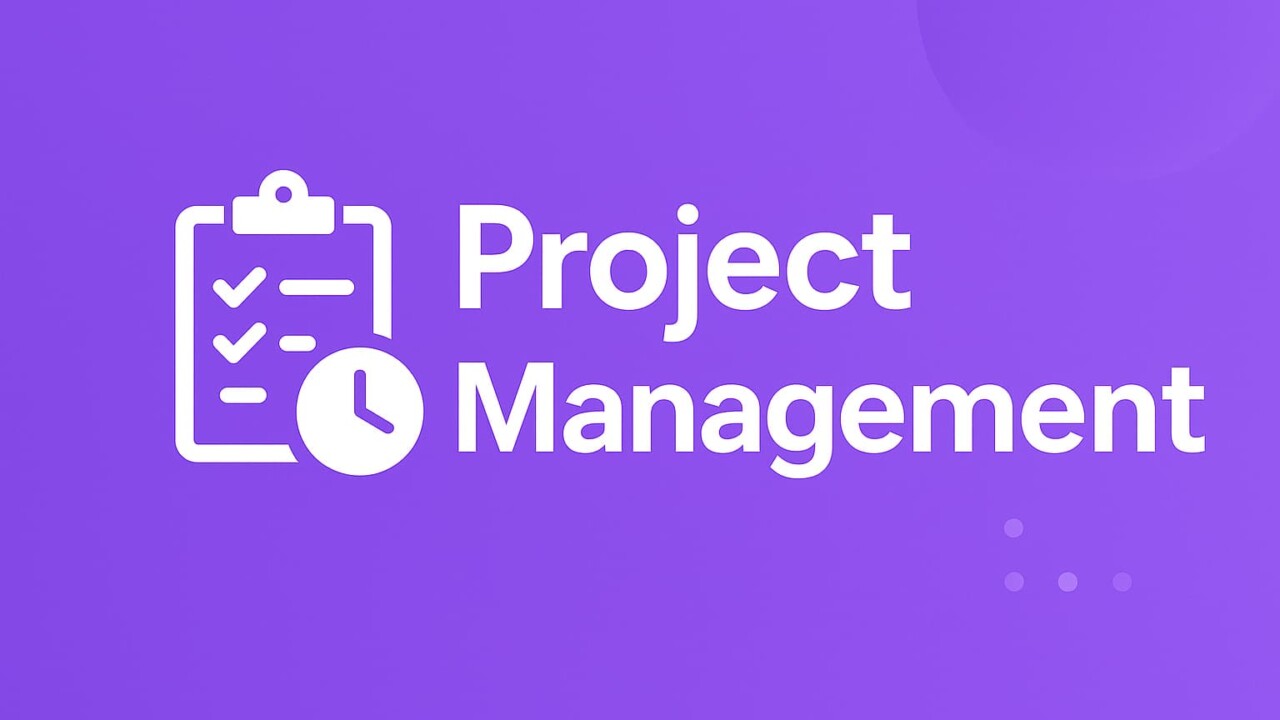What is Project Management?
Project management is basically just figuring out how to get something done, including planning it out, organizing the steps, and following through until it’s finished.
It can involve anything from planning a wedding to running a big website launch. At the professional level, though, project management usually involves specific tools and practices to keep things on track.
In this article, we’ll look at the broader concepts of project management, especially for digital projects like websites, creative work, and marketing campaigns.
Why Project Management Matters
Strong project management provides structure and clarity. It ensures projects move forward smoothly, resources (time and money) are used wisely, and risks are managed accordingly.
- Clarity and Direction: A clear plan means everyone knows their role, deadlines, and objectives.
- Resource Allocation: Proper planning helps avoid wasted time, money, or effort.
- Risk Management: Anticipating risks and having a plan reduces surprises and setbacks.
In short: Project managment helps keep big initiatives organized, on track, and less stressful.
Popular Tools for Project Management
Not every project needs a robust project management tool. Sometimes a simple checklist or calendar is enough. If you’re looking to manage bigger projects, improve collaboration, or just be more organized, these tools are a great place to start.
Popular project management tools include:
- Asana: User-friendly task management with deadlines and progress tracking.
- ClickUp: Flexible software with customizable views, goal tracking, and task dependencies.
- Jira: Popular for software teams with strong agile and sprint planning features.
- Notion: A superpowered multi-tool that can be used for project management, documentation, and thousands of other applications.
- Trello: Visual board-and-card system, great for smaller teams and projects.
If you’re new to project management, I’d recommend Asana, Notion, or Trello. They’re versatile tools that can help you with project and idea organization without going overkill.
For those who prefer overkill, ClickUp and Jira are popular options. While I don’t recommend Jira as it’s FAR too complicated for most projects aside from enterprise software, it is useful to learn if you’re serious about a digital career. If you’re looking for a dedicated power-user project management software, I’d recommend ClickUp, as it can range from simple to incredibly complex and customized.
Key Elements of Project Management
Successful project management usually involves:
- Scope Definition
- Resource Allocation
- Time Management
- Cost Estimation and Budgeting
- Quality Assurance
- Risk Management
- Communication
- Stakeholder Management
Let’s go through each in a bit more detail:
Scope Definition
Set clear goals, deliverables, and deadlines to avoid “scope creep” — when projects grow beyond their original plan.
Resource Allocation
Assign the right people, budget, and tools to tasks so work stays balanced and efficient.
Time Management
Break projects into smaller tasks with realistic timelines, then track progress.
Cost Estimation and Budgeting
Plan a budget and monitor expenses to keep the project financially viable.
Quality Assurance
Set quality standards and test against them — not just at the end, but throughout the process.
Risk Management
Identify possible issues early and prepare solutions before they derail progress.
Communication
Keep everyone updated with clear, regular communication.
Stakeholder Management
Understand and manage expectations from all parties involved in the project.
Project Management Skills
Project managers need both technical and people skills. Some core technical skills include:
- Project Scheduling: Building timelines with milestones and deadlines.
- Resource Allocation: Matching people and resources to tasks.
- Cost Estimation: Forecasting financial needs and keeping to budget.
- Quality Management: Maintaining standards through processes and checks.
- Documentation: Keeping detailed records for review and learning.
- Performance Tracking: Using KPIs and metrics to monitor progress.
- Contract Management: Handling vendor agreements and ensuring compliance.
- Tool Proficiency: Using project management software effectively.
- Methodology Expertise: Applying frameworks like Agile or Waterfall.
How to Learn Project Management
You can learn project management through multiple paths:
Self-Study
Read books and articles, such as:
- The Lean Startup by Eric Ries
- The PMBOK Guide by PMI
Online Courses
Courses on platforms like:
- Coursera & Udemy
- LinkedIn Learning
- PMI Certifications: PMP or CAPM
Workshops and Seminars
Hands-on events hosted by professionals or organizations.
Mentorship
Learn directly from experienced project managers who can provide real-world insights.
Practical Experience
Start small with personal projects and grow into larger initiatives, reflecting on what works and what doesn’t.
Blending these approaches gives the best foundation.
Bottom Line
Project management provides the structure and discipline to guide any initiative from idea to completion. By applying the right tools, methods, and skills, you’ll increase the chances of finishing projects on time, on budget, and to the satisfaction of everyone involved.




